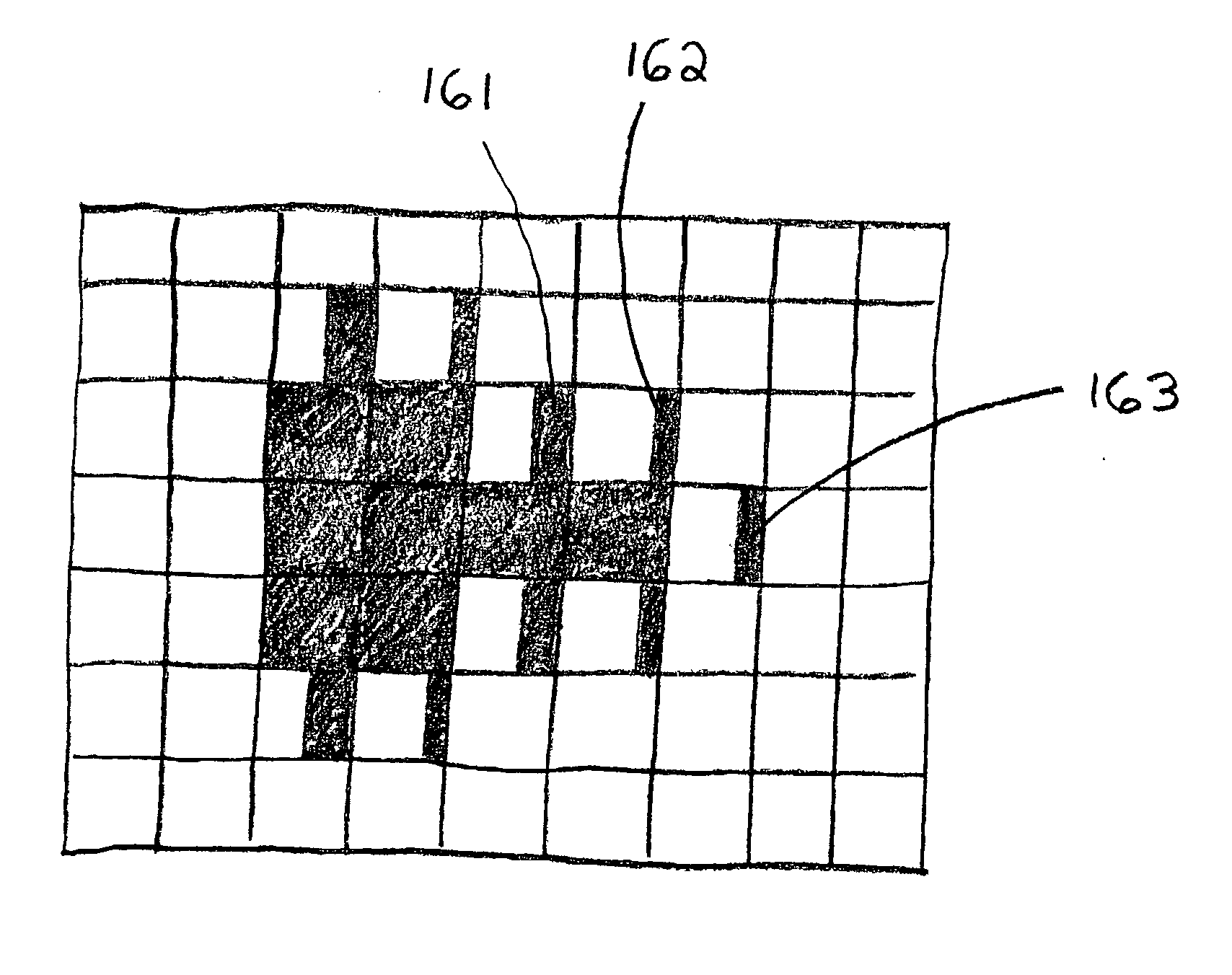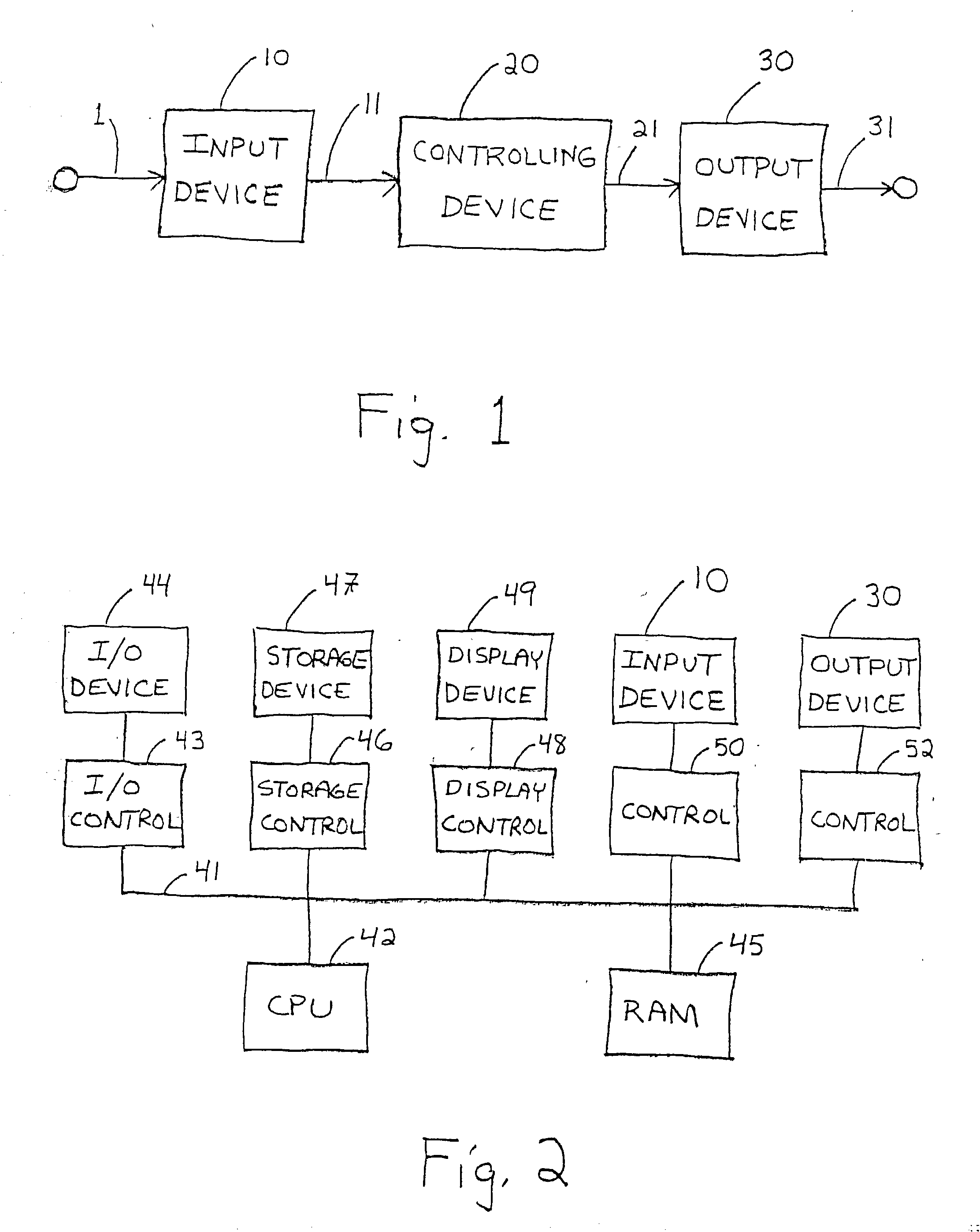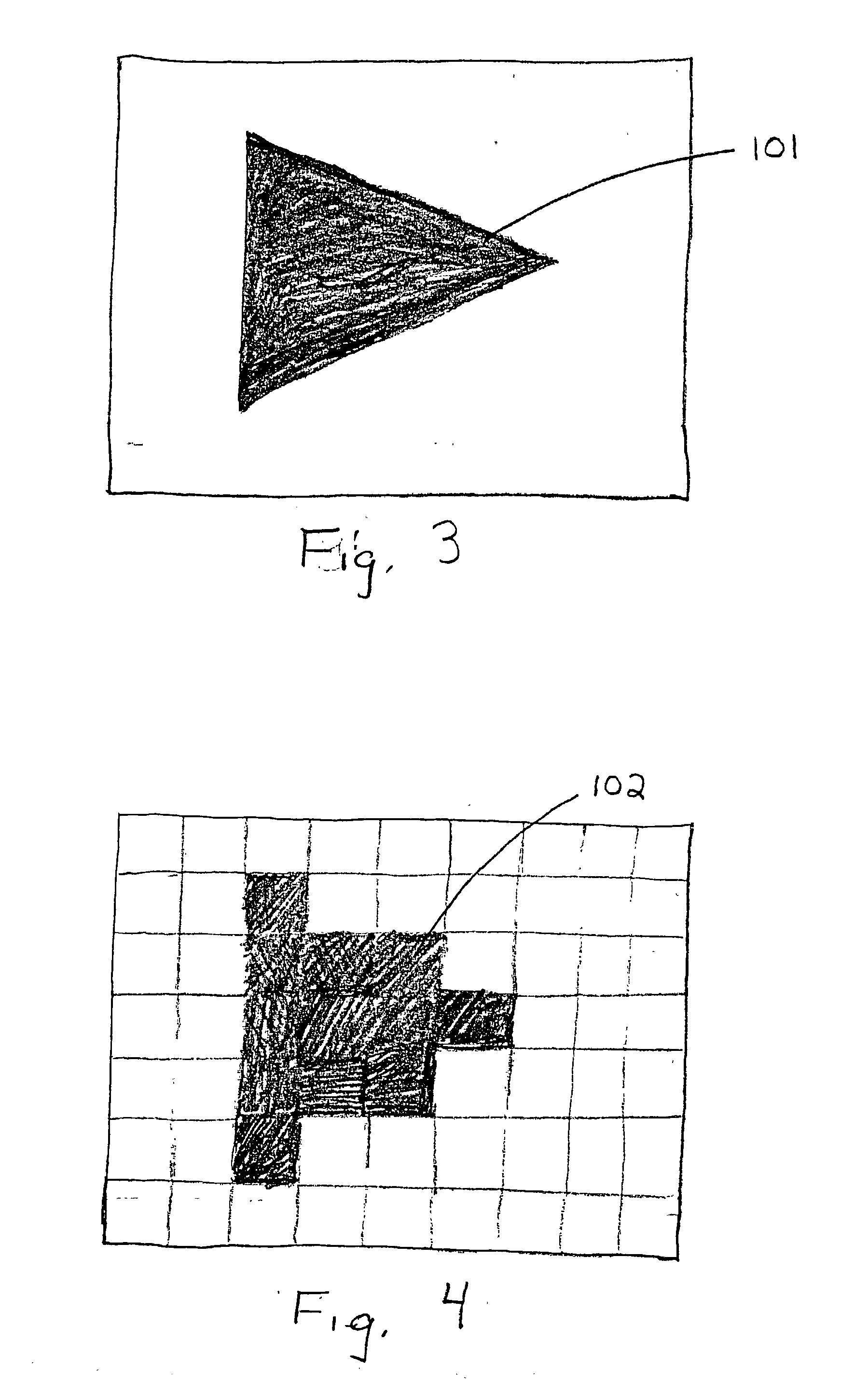PWM rendering for color/gray-scale text and graphics for laser printer
a laser printer and color/grayscale technology, applied in the direction of digital output to print units, visual presentation using printers, instruments, etc., can solve the problems of high frequency, high distortion, and high frequency of sharp edges and corners, and achieve enhanced edge rendition, precise placement of subpixels, and improved edge rendition in toner-transfer printers
- Summary
- Abstract
- Description
- Claims
- Application Information
AI Technical Summary
Benefits of technology
Problems solved by technology
Method used
Image
Examples
Embodiment Construction
System Overview
[0038] FIG. 1 illustrates major components in a typical image reproduction system. Input device 10 receives from path 1 signals representing an original image and generates along path 11 a rasterized representation of the original image. Controlling device 20 receives this representation from path 11 and, in response, generates along path 21 an output-device-dependent representation of the original image. Output device 30 receives this representation from path 21 and, in response, generates along path 31 a printed representation of the original image. The present invention is directed toward improving the perceived quality of the printed representation produced by the output device.
[0039] Input device 10 may be a software application capable of generating text or graphics images or, alternatively, may be an apparatus such as a scanner or camera. If input device 10 is a software application for creating images, the signals received from path 1 could represent commands ...
PUM
 Login to View More
Login to View More Abstract
Description
Claims
Application Information
 Login to View More
Login to View More - R&D
- Intellectual Property
- Life Sciences
- Materials
- Tech Scout
- Unparalleled Data Quality
- Higher Quality Content
- 60% Fewer Hallucinations
Browse by: Latest US Patents, China's latest patents, Technical Efficacy Thesaurus, Application Domain, Technology Topic, Popular Technical Reports.
© 2025 PatSnap. All rights reserved.Legal|Privacy policy|Modern Slavery Act Transparency Statement|Sitemap|About US| Contact US: help@patsnap.com



